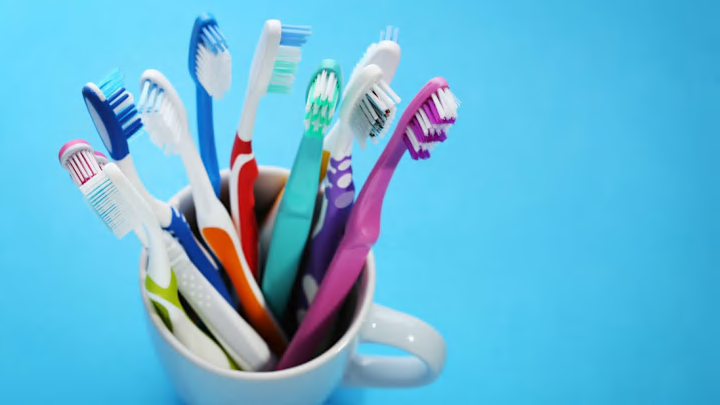If your trusty toothbrush has been with you for so long that you can’t even remember buying it, you might want to trot on down to the nearest drugstore posthaste.
According to the American Dental Association—not to mention countless dentists and toothbrush manufacturers—we should all be replacing our toothbrushes (or toothbrush heads, if your brush is electric) about every three to four months. And if the bristles look frayed earlier than that, feel free to do it more frequently. The advice isn’t just a marketing ploy by Big Dental to get you to shell out more bucks on brushes. For one, overused bristles can’t scrub plaque from your pearly whites as effectively, and they can also be rough on your gums.
Another big motivator to abide by the every-three-to-four-months rule is the knowledge that really disgusting things can accumulate on your toothbrush over time—E. coli, blood, herpes, you name it. Sticking your brush in boiling water or mouthwash can help cut down on germs, but they can also wear your brush out more quickly. Instead, as dentist Dr. Karyn Kahn told the Cleveland Clinic, you can just run it under hot water regularly.
But definitely still replace it every few months. You should also spring for a new brush if you get sick or contract any kind of mouth infection. “It’s an easy fix to make sure lingering bacteria doesn’t lead to reinfection or get passed on to family members,” Kahn explained. “This makes a lot more sense than trying to clean your toothbrush by boiling it or by using hydrogen peroxide or vinegar.”
And if you’re thinking you can extend the shelf life of your toothbrush by skipping a few brushing sessions, here’s why that’s a really bad idea.
A version of this story ran in 2021; it has been updated for 2022.
